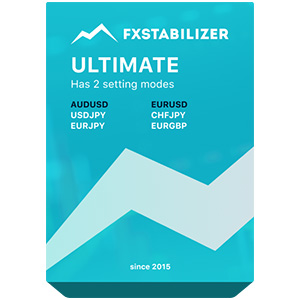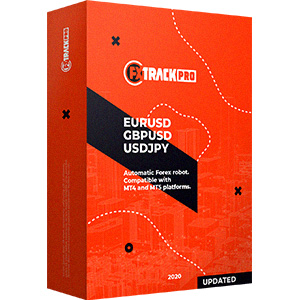
According to statistics from Forex brokers, prop firms, and financial analysts, only 3-5% of Forex traders are consistently profitable. This is because consistent profitability requires lots of sacrifices-hard work, long study hours, tons of chart time, and the discipline to consistently follow a trading plan. Consequently, traders who rush into live trading without sufficient experience or trading skills, quickly lose their deposited funds and give up on the business of trading.
Neophyte traders are often encouraged to adopt and optimize existing profitable strategies before creating novel and personalized ones. Studying these trading methods helps traders discover themselves and subsequently create personalized best Forex strategies that suit them.
Keep reading to know more about profitable Forex strategies to make money in the Forex market!
What Is a Forex Trading Strategy?
A Forex trading strategy is an edge-a signal or combination of factors that increase the chances of the Forex market moving in your favor. Having the most successful Forex trading strategy ensures that you make profits because no matter how many losses you incur, you would have enough wins to mitigate the losses. However, before learning the best Forex trading strategies, it is important to understand the foundational concepts of Forex trading. These can be learned by reading The Beginner’s Trading Guide.
After learning the basics, new traders can then trade independently. Sadly, this does not guarantee success because a lot of experience is needed to guide the application of the learned concepts.
Professional traders apply trading strategies systematically. This means they have rule-based strategies and follow a stepwise approach to determining which trades to enter. Your trading plan is essentially a series of instructions that tell you when to enter and exit trades or do nothing at all. Therefore they only enter trades when the criteria set by their rule-based strategies have been met. This is important because it prevents emotional trading decisions, and helps them cultivate self-discipline. Following a trading plan ensures that your trading results are consistent and reproducible.
A trading plan, therefore, is a combination of trading rules which guide the entire trading process, including the trading strategy itself. It is essentially a series of instructions that specify when to enter and exit trades, which trades to enter, the risk management parameters, trade management strategies, or when to do nothing at all. Professional traders always adopt the best Forex trading strategies and trading plan. They develop the self-discipline needed to follow these rules and through experience, they seek to consistently improve their trading strategies. In contrast, most new traders either have no rules or have difficulty following their rules. Hence they lack consistent profitability and are more likely to quickly lose their deposited funds.
The trading strategy is an integral part of the trading plan. Beginner traders can adapt and optimize any of the existing Forex trading strategies. This can be achieved by constant practice and back-testing. Back-testing can improve our pattern recognition skills and makes it easier to identify trade setups in live market conditions. All new Forex trading strategies have to be tested in the market conditions over time. This can be done for 6-12 months through back-testing data, on a demo account in the MetaTrader4 trading platform to avoid the loss of live funds.
Forex Strategies that Work
There are diverse Forex trading strategies that work. However, there are fundamental strategies upon which all other trading systems are built. These Forex trading strategies have been used by thousands of professional traders and have been profitable for long periods. Knowing and understanding these Forex trading methods helps traders determine what strategy or trading style suits them.
Day-trading
Day trading is a short-term Forex trading method in which trades are executed, managed, and exited within the same trading day. This could mean entering trades in one trading session and closing them in another session, as long as entries and exits were done on the same day. Individuals who day trade often capitalize on small to medium-term price swings daily, with no intention of holding trades overnight or over the weekend.
Consequently, most day traders have to spend a significant portion of the day monitoring price action, and this can be time-consuming. Day trading, however, isn’t ‘everyday trading’. Professional traders still choose to only trade on days that present high-probability trading setups that meet the criteria set by their trading plans. To avoid the trap of over-trading, some day traders only trade on the volatile hours of the day-during news releases, or the overlapping session hours.
Scalping
Scalping is a fast-paced Forex trading strategy that works pretty simple. In this Forex trading method traders profit off of small or short-term price swings. The trades typically last from a few seconds to hours, usually less than a day trade. When a scalper makes a few points or pips, they may close a trade in profit and go about their daily activities. Scalping usually requires less time monitoring the market compared to day trading.
Considering the short-lived nature of these trades, scalpers typically bank a few pips or points per trade. However, scalpers compensate for this by opening trades with contract sizes that allow them to make sufficient profit and optimize these small price swings.
You might be a scalper if:
- You do not have the patience to wait for long trades;
- You like fast-paced trading;
- You can change your directional bias quickly;
- You like to spend very little time focused on your charts daily.
Swing trading
Swing trading is a style of trading that involves participating in long-term trades and large price swings. These trades can be held for weeks and months, producing hundreds to thousands of pips and points. To be successful at swing trading, traders have to understand the factors that cause and sustain these price swings, or at least factors that increase the likelihood of participating on the profitable side of the price movements. These factors are components of technical and fundamental analysis.
Technical analysis from a swing trading perspective, is usually applied to higher time frames-monthly, weekly, daily and hourly time frames. This ensures that the swing trades are in line with the dominant market trend, and this makes the trades high probability.
Fundamental analysis from a swing trading perspective involves analyzing the parameters that affect price movement from a fundamental perspective. These include a comparison of interest rates and economic markers between two economies. There are different styles of swing trading. These include:
- Retracement Swing Trading: A retracement occurs when the price chart temporarily reverses as a corrective move before the continuation of the dominant market trend. For example, the retracement for a monthly trend could occur on a daily time frame-this allows for a retracement swing trade.
- Reversal Swing Trading: A reversal swing trade is taken in anticipation of a reversal of a dominant trend.
- Breakout Swing Trading: A breakout occurs when price moves out of a support or resistance level, or a consolidation range. Swing trades can be taken by entering trades in line with this new market trend.
Positioning trading
Position trading is a Forex trading strategy in which traders are taken to profit from the market trend in the long term. These trades are held for months to years, typically longer than swing trades as the long-term biases could take years before coming to fruition. Position traders may take fewer trades than other types of traders. Their biases are not easily changed or influenced by daily fluctuations in the Forex market.
In contrast to scalpers or day traders who take multiple trades in a day or week, position traders may take as little as one or two trades per year. While scalpers are more concerned with real-time market spreads and volatility, position traders usually consider the swap fees on their open positions.
You might be a position trader if:
- You are an independent thinker
- You view the market from a long term perspective
- You have the patience to wait for your trades to play out
- You do not have the time or mental capital to stay on the charts for long periods
Trend trading
Trend trading simply involves trading in line with the market trend in a specific time frame. Most traders believe that pro-trend trades are high-probability trades, and trades are likely to be profitable if the market trends on several time frames (daily, weekly, hourly, etc) align.
Trend trading is preferred by traders because:
- It provides price swings with great momentum.
- It produces more pips or points which is a favorable trading environment.
- It creates a volatile trading environment for traders to profit from.
Trend trading requires traders to only participate in pro-trend trades. In bullish scenarios a trend trader would go long once a swing low forms, expecting the formation of a new high (higher high). In bearish scenarios, a trend trader would go short once a swing high forms, expecting the formation of a new low (lower low).
Trend trading can be combined with other trading styles. Scalpers and day traders can utilize trend trading but often hold trades for a short duration before exiting. Position or swing traders can apply trend trading by trading in line with the higher time frame trend.
Counter-trend trading
Counter-trend trading involves trading in a direction opposite to that of the dominant trend in a specific time frame. It is advisable to enter countertrend trades with some form of confirmation that the counter-trend has been established, and would persist long enough for the trade to be profitable. Experienced traders are often able to predict these short-term reversals by combining several methods of analysis to create a confluence. Counter-trend trades may become reversal trades if the short-term counter-trend move leads to a total reversal.
Fundamental analysis is also critical for successful counter-trend trading. This can be done by analyzing factors like interest rate differentials, monetary policies, the unemployment rate, etc.
There are 2 entry styles for counter-trend trades:
- Aggressive Entries: Aggressive entries are trade executions based on the movement of price to a point of interest. Traders who take aggressive entries need no confirmations to enter trades, besides the movement of price to their point of interest. Traders who take aggressive entries may get earlier entries into their trades. Though this is regarded as a risky approach by new traders, it can be rewarding if the market moves in a favorable direction.
- Conservative Entries: Conservative entries require confirmations to support the idea of price movement of price in a specific direction. When price trades to a specific point of interest, these confirmation tools or patterns are used as signals to execute trades or stay out of the market. Such confirmations may be provided by indicators, chart patterns, market structure, or other tools of technical analysis.
Technical analysis
Technical analysis involves the analysis of price charts to forecast price movement. Professional traders carry out technical analyses systematically. This ensures they have a rule-based approach to technical analysis which allows them to make consistent forecasts with a high degree of accuracy.
Technical analysis relies heavily on previous price behavior. Traders study this through a process known as back-testing. This allows them to study how the price moved in the past under certain circumstances and as a result when similar circumstances present themselves, technical traders expect price to respond similarly.
Backtesting and studying price behavior, helps professional traders optimize their trading methodology and increase their accuracy.
Technical analysis can be employed in counter-trend and pro-trend trades. For counter-trend trades or reversals, it is used as a confirmation that a reversal is imminent or has occurred. Pro-trend traders use tools of technical analysis to determine whether or not a trend would continue. If the trend continues, technical analysis can also be employed to determine the right position to enter trades in the direction of the trend.
Technical analysis provides a rationale upon which trades are taken. Therefore, consistently profitable traders have a similarly consistent approach to technical analysis. They employ robust systems of technical analysis that have been developed through back-testing and experience. Such systems usually deliver more wins than losses, and with enough risk to reward ratio to mitigate the losses.
In addition, technical analysis is used in the best Forex strategies that are included in best Forex robots to bring the highest results in automated trading as well as in manual trading.
SMA Moving Averages Strategy
A simple moving average (SMA) is an indicator that forecasts price movement by taking an average of previous market prices at specific time intervals. It forecasts price behavior by considering the mean of the past price data, as a determinant of future price.
SMAs are used as:
- Tools for determining the dominant market trend;
- Entry signals;
- Technical tools to confirm a market reversal;
- Tools of confluence for other trading strategies.
The ‘period’ of a moving average refers to the number of candlesticks or prices that are considered by a moving average. For instance, a 10-day SMA shows an average of daily closing prices for the past 10 days.
Moving averages may also be used in combination if such combination would produce better results. For example, a 10 period SMA could be used together with a 50 period SMA. however, smaller period SMAs are more sensitive to recent price fluctuations.
News Trading
The Forex market is greatly impacted by the news. This is because the strength of a currency is partly determined by the economic data released during the news events. Most news events are usually published on an economic calendar before the news data is released, or before the trading week begins. By assessing the economic calendar, news traders can speculate about the likely impact of the news and trade in line with that.
Common high impact news events include:
- US Non-farm payroll;
- Unemployment data such as the unemployment rate news;
- Consumer Price Indices;
- Interest rate and monetary policy statements;
- FOMC news releases and minutes, etc.
News trading is an approach to trading in which traders hope to capitalize on the price swings that occur as a result of news releases. These can be short-term or long-term price swings depending on the impact of the news. Some news events are low or medium-impact news and typically produce less price displacement compared to high-impact news.
Significant news in the financial market can be divided into two groups:
- Template news: Template news often have a clear format and often have their release dates fixed beforehand. They include news regarding GDP, Unemployment, Interest rates, etc.
- Non-standard news: These can be released at any point in time because they are often incidents, declarations, statements from governments and government agencies, that are difficult to predict.
Conclusion
Professional traders all around the world have developed lots of successful Forex trading strategies. New traders would have to adopt one of these existing strategies until they're able to develop personalized ones.
Traders who cannot devote such long hours to studying the trading strategies can utilize trading robots instead. Trading bots can predict price movement while executing and managing the trades accordingly.
Developing a personal trading plan requires patience, hard work, and experience with several tools of technical analysis, before finding the specific technical tool or combination of Forex trading strategies that work would produce the best results. This is a difficult process most professional traders had to go through but it is highly rewarding all the same.









